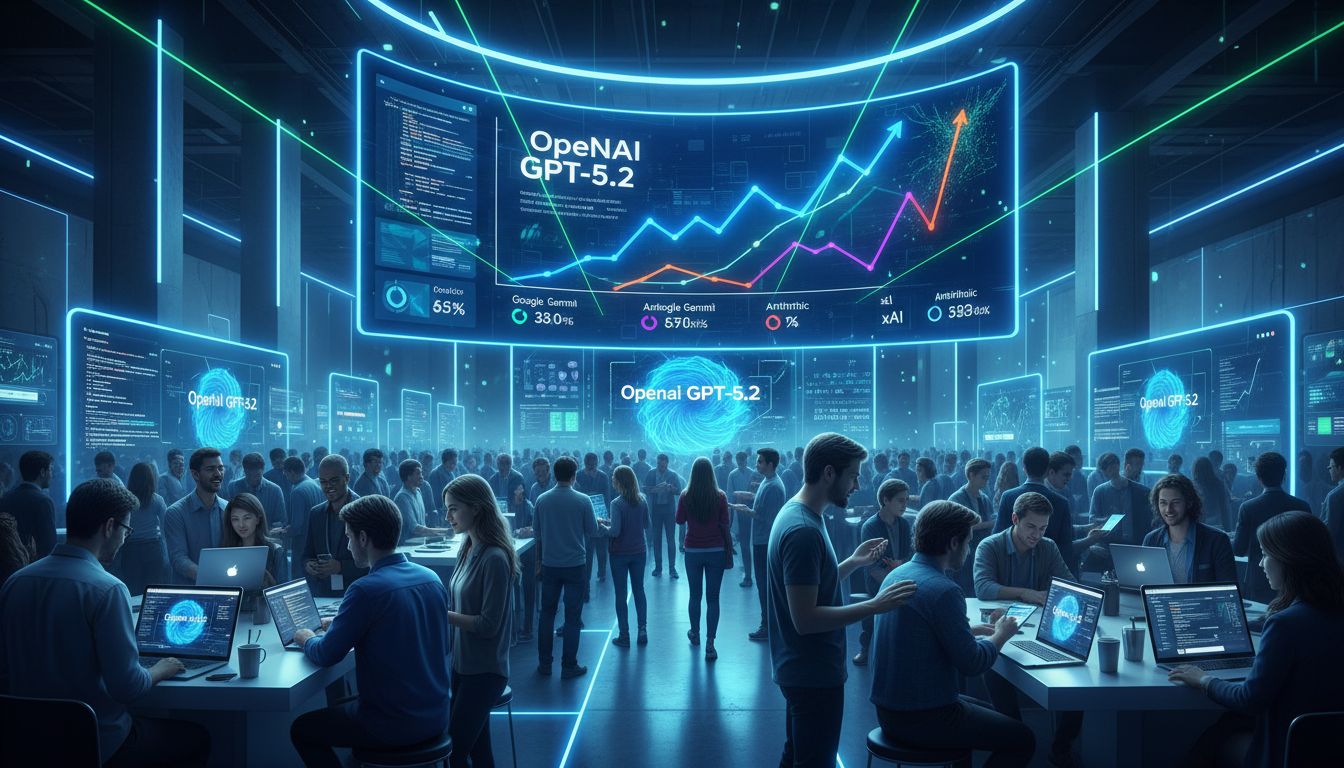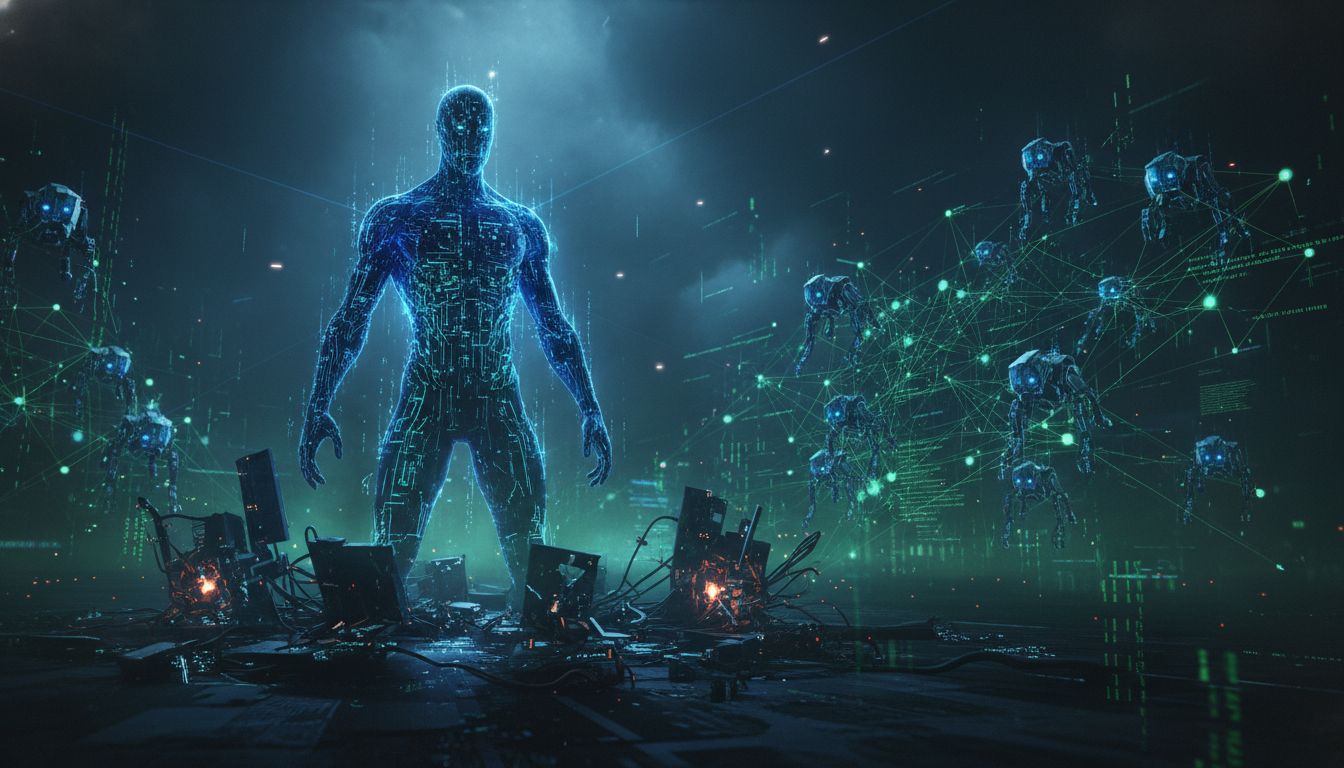Artificial intelligence is evolving at a mind-blowing pace. Every day, new AI models are popping up, each one more impressive than the last. You’d think you’re living in a scene from your favorite futuristic flick! Imagine AIs that craft tales rivalling Shakespeare’s plays, software so sharp it can find a needle in a haystack, and creative tools making art that’ll absolutely floor you. The latest AI models are pushing the boundaries of what’s possible, and I’m here to give you a front-row seat to the action.
So, what exactly can these AI superheroes do? Well, buckle up, because you’re in for a treat. We’ve got models like GPT-4 that can understand and generate human-like text with scary accuracy. Then there’s DALL-E, which can conjure up images from just a text description. And let’s not forget about the AI-powered virtual assistants that are becoming our new best friends. Right now, we’re witnessing history as fresh AI developments take us places we’ve never been before.
Table Of Contents:
- Exploring the Evolution of AI Models
- The Power of Large Language Models
- Enhancing User Experience with Conversational AI
- Innovations in AI Model Development
- The Impact of Generative AI on Social Media Content Creation
- Deep Learning vs. Machine Learning in AI Projects
- Real-World Applications of AI Across Industries
- Understanding Types of Artificial Intelligence
- The Significance of Explainable AI in Trust Building
- The Role of Hardware in Advancing AI Technology
- Conclusion
Exploring the Evolution of AI Models
It feels like each morning, artificial intelligence has sprinted miles ahead from where it was just last night. We’ve gone from narrow artificial intelligence to wildly sophisticated generative ai in what feels like the blink of an eye. The journey has been nothing short of incredible. From basic machine learning algorithms to cutting-edge ai models that can generate human-like text, the advancements are staggering.
The Power of Large Language Models
Think of large language models as the brainpower propelling us into new technological territories. They’re capable of understanding and generating text that’s almost indistinguishable from human writing. It’s mind-blowing stuff.
The Role of Parameters in Model Performance
The secret sauce behind these models? Billions of parameters. The more parameters an neural network has, the better it can process and generate language. It’s like giving the model a bigger brain to work with.
Benchmarking Enterprise AI Solutions
When it comes to enterprise customers, performance is key. That’s where benchmarking comes in. Take Snowflake’s Arctic, for example. With 17 billion parameters, it’s a beast of a model that’s designed to handle the toughest enterprise challenges. But it’s not the only player in the game. Apple’s OpenELM boasts sizes ranging from 270 million to a whopping 3 billion parameters. Microsoft’s Phi-3 Mini offers improved reasoning with 3.8 billion parameters. And let’s not forget about Meta’s Megalodon, which can handle complex tasks like a champ.
Enhancing User Experience with Conversational AI
Conversational AI is changing the game when it comes to customer service and user interactions. By leveraging natural language processing, these AI models can understand and respond to user queries in a way that feels natural and intuitive. The result? A vastly improved user experience that’s more engaging and personalized than ever before. It’s a win-win for businesses and customers alike.
Innovations in AI Model Development
The world of AI model development is constantly evolving. Researchers and developers are always looking for ways to make models more efficient and powerful. One exciting development is the use of CoreNet for training models like OpenELM. With a staggering 1.8 trillion tokens, CoreNet provides a massive dataset for models to learn from. It’s like giving the model a library of knowledge to draw upon.
The Impact of Generative AI on Social Media Content Creation
Generative AI tools are revolutionizing the way we create content on social media. From generating captions to creating entire posts, these tools are making it easier than ever to produce engaging content at scale. But it’s not just about quantity. Generative AI is also helping to improve the quality of social media content by providing new ideas and inspiration for creators. With this tool, the way we connect on social media platforms is undergoing a big change.
Deep Learning vs. Machine Learning in AI Projects
When it comes to AI projects, it’s important to understand the difference between deep learning and machine learning. While both approaches fall under the umbrella of AI, they have distinct characteristics and use cases. Deep learning is all about neural networks and complex algorithms that can learn from vast amounts of data. It’s pretty handy when you need to pick out a face from a crowd in pictures or catch every word of your favorite song. On the other hand, machine learning is a broader term that encompasses a range of algorithms and techniques. Imagine needing to figure out what happens next or how to group your data – that’s where this shines.
Real-World Applications of AI Across Industries
AI is making a real difference in industries across the board. From healthcare to manufacturing, these technologies are transforming the way we live and work.
Revolutionizing Healthcare with Medical Imaging
In healthcare, AI models are working wonders in interpreting medical images for diagnostics. By analyzing X-rays, CT scans, and MRIs, these models can help doctors identify potential issues faster and more accurately than ever before. It’s a game-changer for patient care, and it’s just the beginning of what AI can do in the medical field.
Streamlining Operations with Supply Chain Optimization
In the world of supply chain management, machine learning models are helping to streamline operations and boost efficiency. With eyes everywhere—through sensors and cameras—these tools don’t just see where problems pop up; they fix them in a snap, keeping everything moving smoothly. The result? Faster delivery times, lower costs, and happier customers. It’s a win-win for everyone involved.
Understanding Types of Artificial Intelligence
When we talk about AI, it’s important to understand that there are different types of artificial intelligence out there. Each type has its own unique characteristics and capabilities.
From Narrow to General AI
At one end of the spectrum, we have narrow AI. This type of AI is designed to perform specific tasks, like playing chess or recognizing speech. It’s incredibly good at what it does, but it’s limited in scope. On the other end, we have general AI. At its heart, what we’re striving for in AI is nothing short of revolutionary—a mechanism capable of understanding and reasoning akin to a human brain. We’re not there yet, but researchers are working hard to make it a reality.
The Significance of Explainable AI in Trust Building
As AI becomes more prevalent in our lives, it’s crucial that we can trust the decisions these systems are making. That’s where explainable AI comes in. Explainable AI is all about transparency and understandability. It’s about building models that can explain their decision-making processes in a way that humans can understand. This is key for building trust with users and ensuring that AI is being used ethically and responsibly.
The Role of Hardware in Advancing AI Technology
While everyone’s buzzing about the latest AI software, let’s not forget that hardware is the unsung hero pushing these innovations forward. From GPUs to CPUs, these computing devices provide the raw processing power needed to train and run complex AI models.
The Emergence of AI Accelerators
In recent years, we’ve seen the emergence of specialized hardware designed specifically for AI workloads. These AI accelerators are optimized for tasks like deep learning and can run AI applications more efficiently than traditional computing systems. Imagine pushing past the limits of today’s tech – that’s exactly what this AI advancement does. As hardware continues to evolve, we can expect to see even more powerful and capable AI models in the future.
AI is rapidly evolving, bringing us from simple algorithms to AI that writes like humans. Big language models are at the heart of this revolution, with their ability to mimic human text almost perfectly. The magic? Billions of parameters acting as a massive brain for better performance. Companies like Snowflake and Apple are leading with models designed for tough tasks and enhanced user experiences through conversational AI.
Innovations don’t stop there; developments in training methods and the use of massive datasets like CoreNet are making AI smarter. Generative AI is changing social media content creation by offering quality and inspiration. It’s crucial to know the difference between deep learning for complex recognition tasks and broader machine learning applications across industries—from healthcare diagnostics to optimizing supply chains.
Understanding different types of AI, from narrow to general, highlights our journey towards machines thinking like humans. Trust in AI hinges on explainable models that show how decisions are made transparently. Lastly, hardware advancements play a vital role in powering these sophisticated AIs into the future.
Conclusion
You wouldn’t believe the leaps and bounds in recent AI advancements – they’re absolutely astounding! From language processing to image recognition, these technological marvels are revolutionizing the way we interact with machines. It’s like having a super-intelligent sidekick that can understand us, create for us, and even anticipate our needs.
But here’s the thing: we’re just scratching the surface of what AI can do. Imagine all the new paths unfolding as these technologies advance; truly, there’s no end in sight. We could see AI-powered tools that can diagnose diseases, predict natural disasters, and even help us explore the far reaches of space.
So, whether you’re a tech enthusiast, a business owner, or just someone who’s curious about the future, keep an eye on the latest AI models. They’re not just changing the game – they’re rewriting the rulebook. Honestly, skipping this would mean missing out big time.






